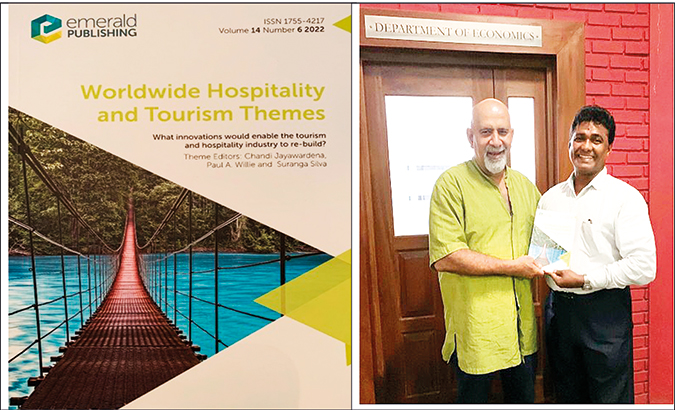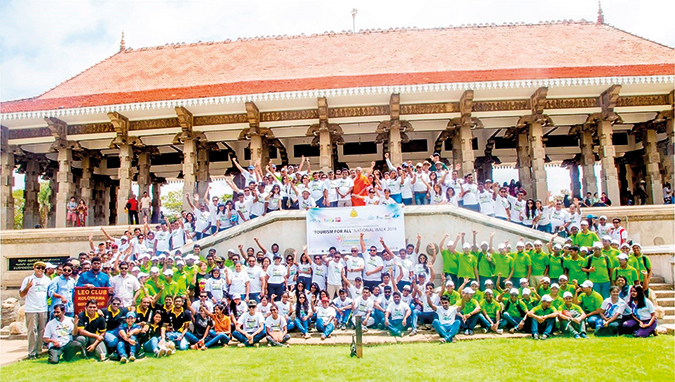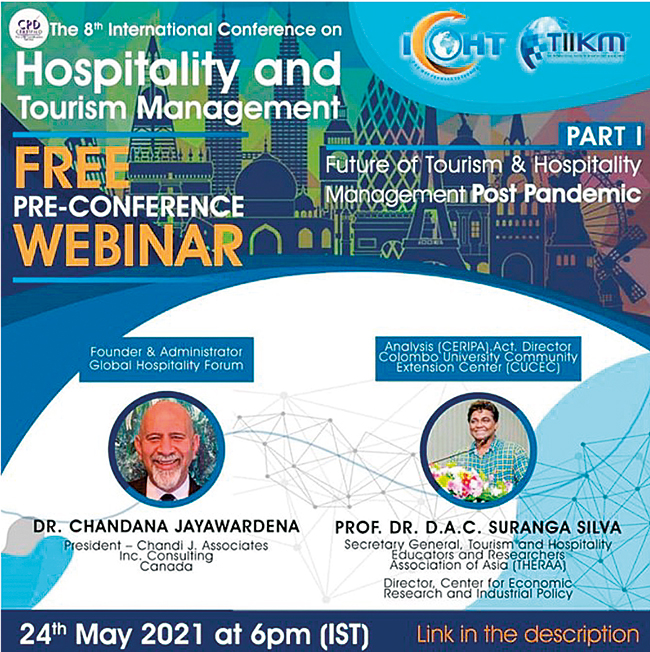Features
Professor D. A. C. Suranga Silva An Innovative Tourism Educator
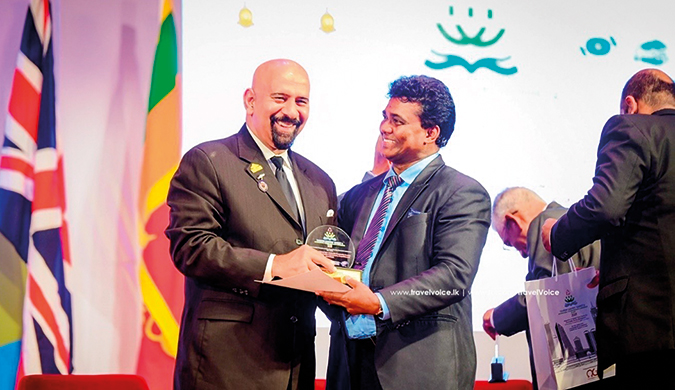
PLACES, PEOPLE & PASSIONS (3Ps)
Part seven
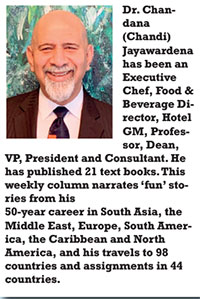 Dr. Chandana (Chandi) Jayawardena DPhil
Dr. Chandana (Chandi) Jayawardena DPhil
President – Chandi J. Associates Inc. Consulting, Canada
chandij@sympatico.ca
Profile
Suranga is a Professor at the University of Colombo. He is also Coordinator / Head of the newly established Sustainable Tourism Unit of the university. He obtained his Ph.D. in Tourism Economics from the Vrije University Amsterdam, the Netherlands. Suranga is active both academically and professionally within the tourism sector of Sri Lanka and beyond. He is a lead trainer of Global Sustainable Tourism Council, and a former Director General of Sri Lanka Institute of Tourism and Hotel Management (SLITHM). He is an award-winning academic who is a visiting professor in a few international universities, and chair of international conferences. Suranga has published more than 80 articles, books, and other publications.
Heard but not Seen
A year before I met Suranga, I heard a lot of good things about him. During a consulting assignment I undertook at Sri Lanka Institute of Tourism and Hotel Management (SLITHM) in 2013, I was required to prepare and submit four reports to my client – then Chairman of SLITHM, Chandra Mohotti. As a part of my work, I did an evaluation of 29 senior teaching staff of the institute after lengthily one-on-one interviews with them. Each of them spoke highly about their former Director-General of SLITHM – Dr. Suranga Silva. I was told how Suranga worked hard to create a research culture at SLITHM and helped a few of them to obtain post graduate qualifications. One of SLITHM Campus Principals told me that, “Dr. Suranga was a breath of fresh air for our institute. We miss his energy and support.”
First meeting
A year after that I was invited by SLITHM to deliver a keynote at their graduation event held at BMICH. After my speech, a person I did not recognize approached me with a big smile. He said, “Excellent speech Dr. Chandi. Well done! I am Suranga.” The first impression Suranga creates is always very pleasant. He treats everyone with a big smile before talking about business. After a quick chat we agreed to meet at the University of Colombo during the next weekend. Suranga surprised me by informing me that he teaches every weekend. After that meeting, Suranga and I became friends.
Partnership for ICOHT from 2014 to 2022
Over the next eight years Suranga and I collaborated in performing the roles of the Co-Conference Chairs of a successful annual event – The International Conference on Hospitality and Tourism Management (ICOHT). The organizers of this event – The International Institute of Knowledge Management went ahead with the event even during the height of the pandemic in 2020 and 2021 via zoom, and with Suranga and I sharing our duties from two time zones in Sri Lanka and Canada. We were a good two-man team. This much sought-after, annual scholarly event is now ranked as a premier international forum for the presentation of new advances and research results in the fields of tourism and hospitality management. This conference brings together tourism and hospitality industry leaders, educators, researchers, and scholars from around the world.
Roped in to do more Scholarly Work
As the leading tourism educator in Sri Lanka, Suranga has many irons in the fire within the University of Colombo, and in external scholarly initiatives in Sri Lanka, and around the world. None of my annual trips to Sri Lanka since 2015, had been without Suranga gently roping me in to do some scholarly work, often on honorary basis! The moment he hears of my travel schedule to Sri Lanka, he contacts me through e-mail, WhatsApp, Facebook messenger or by phone with some request, always appearing to be urgent! “Hey Brother, once again your university needs your help…” He starts and gently convinces me to do some work for a university where I studied business administration over four decades ago.
Over the years, Suranga has collared me into being a presenter, panellist and a moderator for the University of Colombo tourism research symposiums, annual Tourism Leader’s Summit, and tourism conferences. Every time, his passion for student success has been an attractive bait for me to participate. After doing occasional guest lectures at University of Colombo for few years, during the pandemic he convinced me to present a series of webinars over zoom to his graduate students in Tourism Economics. I had to do these till 2:00 am my time on Saturdays. Now I am a visiting faculty member of University of Colombo, as arbitrarily arranged by Suranga.
Co-authors and Co-editors
Recently we collaborated in research and publishing of a couple of articles. Suranga and I decided to focus our latest research on innovation in tourism in the context of the global pandemic and Sri Lanka’s unstable political situation. Although the country was doing well with a focus on formulated strategies to attract six million tourists and US$ 10 billion earnings by 2025, the 2019 Easter Sunday terrorist attacks that killed 269 people severely affected tourism. Within a year of those attacks, the global COVID-19 pandemic further impacted tourism. The current war in Europe added to the problems of Sri Lanka, which in 2022 plunged to its worst economic and political crisis. In out last published article Suranga and I suggested nine innovative actions to rebuild tourism in Sri Lanka from 2022 to 2030.
In 2022, Suranga joined me and one of my former Canadian Colleagues, Dr. Paul Willie of the Niagara College to lead a team of 28 authors (mainly university professors) from 12 countries and edit the Volume 14 Number 5 of the Worldwide Hospitality and Tourism Themes (WHATT) Journal. We were determined to capture the essence of innovation in various parts of the world in re-building tourism and hospitality industry, after the global pandemic. We chose the theme: “What innovations would enable the tourism and hospitality industry to re-build?” for this volume published by Emerald Publishing in the United Kingdom. The team of scholars we led wrote regional and country case study articles, covering a total of 121 countries.
After that Suranga was saddened to hear from me that after 30 years of academic publishing, I have decided to take a break from academia to focus on a new career of creative writing. “Hey Brother, that’s bad news for me. I was hoping to collaborate with you to produce many more significant academic publications for many years to come…” He then tried to convince me to help his master’s students to convert their final dissertations into publishable journal articles. Citing my busy schedule, so far, I have avoided the temptation.
On hearing my latest travel plans to Sri Lanka, this morning (September 6), Suranga sent me a long WhatsApp message. He ended his message, by saying: “… I am organizing the launching of Sustainable Tourism Unit at the Faculty of Arts, the University of Colombo on October 2, 2023, at 2:00 pm. Please join us at this inauguration event held at the Senate Hall.” I immediately accepted the invitation. Gently roped in again!
Questions and Answers
After returning to Canada, a couple of days after my last meeting with Suranga at the University of Colombo in April 2023, I sent the following ten questions to him:
Q: Out of all the places you have visited in Sri Lanka and overseas, what is your favourite and most interesting place?
A: First, as a place I most like from outside the country is Singapore as an attractive destination that has captured my heart due to several reasons. Its discipline, diversity, clean and safe environment, efficient public transport, high-quality living standards, and delightful culinary offerings make it an appealing place to visit. Additionally, its proximity to Sri Lanka, not only in terms of distance but also in terms of cultural, climatic, and social similarities, adds to its allure.
Secondly, the place inside Sri Lanka I like most is Sigiriya due to its stunning landscape, rich historical and cultural heritage, and architectural marvels. I find it a captivating site to explore. Moreover, its proximity to other popular tourist attractions, such as Minneriya National Park, Habarana, and Polonnaruwa further enhances its appeal as a must-visit destination.
Q: Out of all the inspiring people you have met, who inspired you most?
A: I will name two. First, Professor Dr. Howard Nicholas, a Sri Lankan economist and social scientist, Professor in Economics at the International Institute of Social Studies in the Netherlands, and Desamanya W. D. Lakshman, another esteemed Sri Lankan economist, Professor in Economics, the 15th Governor of the Central Bank of Sri Lanka and former Vice Chancellor of the University of Colombo. They both have been great sources of inspiration for me. They guided my academic life towards progress and excellence and played crucial roles in the development of institutions and the country.
Q: At the present time, what is your key passion in life, other than higher education?
A: My primary passion, aside from being an educator, is to meaningfully and effectively help impoverished people eliminate poverty. I firmly believe that sincere and dedicated efforts can make a significant difference in their lives. Additionally, I strive to promote ethnic harmony through cross-cultural understanding and empower people of all ethnicities to contribute to the main economic development streams. At the same time, I have a passion to be a responsible nature lover with a wonderful aspiration that we can make a positive impact on the environment and contribute to the conservation of natural resources, embracing responsible practices as a tourist and cultivator as well.
Q: I have seen you working very hard including regular teaching during weekends at the University of Colombo. What does your schedule look like on a normal work day?
A: A typical workday for an academic is dynamic and diverse, involving research, teaching, administrative tasks, and professional development. Mornings begin with day planning and with previously scheduled work, followed by teaching preparations and responding to emails. Day time is devoted to teaching responsibilities and having office hours to meet with students needing help. In the afternoons, I continue with research, grading, administrative duties, and attend to professional development activities. Late afternoons and evenings include networking, personal study, and more research or writing. All this to say that I, being an academic, often have busy but sometimes flexible schedules.
Q: You are the Founding Coordinator of the Postgraduate Diploma and Master in Tourism Economics and Hotel Management, at the University of Colombo. What was your proudest moment, in your program?
A: I am proud of the successful establishment of several Industry-Interactive Tourism Study Programmes, international partnerships, establishment of the students alumni, introducing the International Tourism Leaders’ Summit, International Tourism Research Conference, Sri Lanka Tourism Expo, and Sri Lanka Tourism Job Fair. For all these initiatives we have the support and recognition of industry stakeholders.
However, my proudest moment is being the coordinator for introducing the first Special Bachelor’s Degree in Sustainable Tourism and Hospitality Management under the newly established Sustainable Tourism Unit of the Faculty of Arts, University of Colombo.
Q: What was your most productive assignment during a sabbatical?
A: During my two-year term (2010-2012) as the Director General of Sri Lanka Institute of Tourism & Hotel Management (SLITHM) under the Ministry of Economic Development, I achieved significant milestones. With support from JICA, I introduced new training and study programs to address industry human resource requirements and to modernize SLITHM’s offerings. Upgrading several study programs to meet NVQ level standards. I tried my best to implement Mobile/E-Learning modes and a Franchisee Operation System, promoting growth and sustainability while enhancing education accessibility; to successfully establish regional centres; to expand SLITHM’s reach and impact, further contributing to the development of Sri Lanka’s tourism and hospitality industry.
Q: National institutions in Sri Lanka frequently face political interference challenges. In your previous role as the Director General of SLITHM, how did you handle such challenges?
A: I addressed political interference challenges with a focus on merit, transparency, and results-focused outcomes. Decision-making was based on institutional best interests, and I strengthened governance structures to maintain impartiality. Regular engagement with stakeholders fostered understanding and cooperation, while professionalism and
accountability upheld SLITHM’s integrity. I advocated academic freedom and emphasized SLITHM’s contributions to the expectations of the tourism industry with the support of all stakeholders. Through these strategies, I navigated political challenges, safeguarding SLITHM’s growth and success as the leading tourism and hospitality education institution in Sri Lanka.
Q: Can you describe your role as a Lead-Trainer for Sustainable Tourism Destination Management of Global Sustainable Tourism Council (GSTC)?
A: My role is pivotal in providing the knowledge contribution to promote sustainable tourism practices in Sri Lanka with the proper understanding of global best practices. I must design and deliver training programs, empowering destination managers and stakeholders with knowledge of sustainable tourism principles. Through workshops, training, and educational activities, I advocate for necessary tourism strategies to create a well-balanced approach for environmentally sensitive, socio-culturally responsible, and economically viable tourism development through the necessary collaboration between government authorities / organizations, cooperate sector and community organizations as well.
Q: You are also the Secretary General of Tourism and Hospitality Educators and Researchers Association of Asia (THERAA). In this role what has been your main contribution to Tourism in Asia?
A: I play a vital role in fostering collaboration and excellence in tourism and hospitality education and research across Asia. By bringing together academics, researchers, and industry professionals, I facilitate knowledge exchange and promote best practices through conferences, workshops, and publications. Advocating for educational standards and research advancements, I contribute to the professional growth of members and elevate THERAA’s influence in shaping the future of the industry. My strategic vision is to position THERAA as one of the outstanding associations, while creating a meaningful knowledge platform to advance excellence and sustainability in the Asian tourism and hospitality industry.
Q: In addition to being the Chief Editor of the Journal of Tourism Economics and Applied Research (JTEAR), you continue to research and publish. Out of your many published works, which single publication has helped the Tourism industry most, in a practical sense?
A: As Chief Editor of JTEAR, my privilege is overseeing numerous research publications that contribute to the tourism industry. Identifying a single most impactful publication is challenging and not fair enough due to diverse industry needs. Instead, the collective research addresses critical issues, including sustainable practices, destination management, marketing, economic impacts, and technology integration. JTEAR’s practical significance lies in providing evidence-based insights and application-oriented research findings for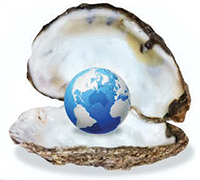 industry
industry
stakeholders, informing policies and strategies that are most effective for the decision makings of the industry. The cumulative effect of these contributions drives positive change and sustainable development in the global tourism sector.
Next week, 3Ps will feature a lawyer turned ever-green western musician.
Features
The heart-friendly health minister

by Dr Gotabhya Ranasinghe
Senior Consultant Cardiologist
National Hospital Sri Lanka
When we sought a meeting with Hon Dr. Ramesh Pathirana, Minister of Health, he graciously cleared his busy schedule to accommodate us. Renowned for his attentive listening and deep understanding, Minister Pathirana is dedicated to advancing the health sector. His openness and transparency exemplify the qualities of an exemplary politician and minister.
Dr. Palitha Mahipala, the current Health Secretary, demonstrates both commendable enthusiasm and unwavering support. This combination of attributes makes him a highly compatible colleague for the esteemed Minister of Health.
Our discussion centered on a project that has been in the works for the past 30 years, one that no other minister had managed to advance.
Minister Pathirana, however, recognized the project’s significance and its potential to revolutionize care for heart patients.
The project involves the construction of a state-of-the-art facility at the premises of the National Hospital Colombo. The project’s location within the premises of the National Hospital underscores its importance and relevance to the healthcare infrastructure of the nation.
This facility will include a cardiology building and a tertiary care center, equipped with the latest technology to handle and treat all types of heart-related conditions and surgeries.
Securing funding was a major milestone for this initiative. Minister Pathirana successfully obtained approval for a $40 billion loan from the Asian Development Bank. With the funding in place, the foundation stone is scheduled to be laid in September this year, and construction will begin in January 2025.
This project guarantees a consistent and uninterrupted supply of stents and related medications for heart patients. As a result, patients will have timely access to essential medical supplies during their treatment and recovery. By securing these critical resources, the project aims to enhance patient outcomes, minimize treatment delays, and maintain the highest standards of cardiac care.
Upon its fruition, this monumental building will serve as a beacon of hope and healing, symbolizing the unwavering dedication to improving patient outcomes and fostering a healthier society.We anticipate a future marked by significant progress and positive outcomes in Sri Lanka’s cardiovascular treatment landscape within the foreseeable timeframe.
Features
A LOVING TRIBUTE TO JESUIT FR. ALOYSIUS PIERIS ON HIS 90th BIRTHDAY

by Fr. Emmanuel Fernando, OMI
Jesuit Fr. Aloysius Pieris (affectionately called Fr. Aloy) celebrated his 90th birthday on April 9, 2024 and I, as the editor of our Oblate Journal, THE MISSIONARY OBLATE had gone to press by that time. Immediately I decided to publish an article, appreciating the untiring selfless services he continues to offer for inter-Faith dialogue, the renewal of the Catholic Church, his concern for the poor and the suffering Sri Lankan masses and to me, the present writer.
It was in 1988, when I was appointed Director of the Oblate Scholastics at Ampitiya by the then Oblate Provincial Fr. Anselm Silva, that I came to know Fr. Aloy more closely. Knowing well his expertise in matters spiritual, theological, Indological and pastoral, and with the collaborative spirit of my companion-formators, our Oblate Scholastics were sent to Tulana, the Research and Encounter Centre, Kelaniya, of which he is the Founder-Director, for ‘exposure-programmes’ on matters spiritual, biblical, theological and pastoral. Some of these dimensions according to my view and that of my companion-formators, were not available at the National Seminary, Ampitiya.
Ever since that time, our Oblate formators/ accompaniers at the Oblate Scholasticate, Ampitiya , have continued to send our Oblate Scholastics to Tulana Centre for deepening their insights and convictions regarding matters needed to serve the people in today’s context. Fr. Aloy also had tried very enthusiastically with the Oblate team headed by Frs. Oswald Firth and Clement Waidyasekara to begin a Theologate, directed by the Religious Congregations in Sri Lanka, for the contextual formation/ accompaniment of their members. It should very well be a desired goal of the Leaders / Provincials of the Religious Congregations.
Besides being a formator/accompanier at the Oblate Scholasticate, I was entrusted also with the task of editing and publishing our Oblate journal, ‘The Missionary Oblate’. To maintain the quality of the journal I continue to depend on Fr. Aloy for his thought-provoking and stimulating articles on Biblical Spirituality, Biblical Theology and Ecclesiology. I am very grateful to him for his generous assistance. Of late, his writings on renewal of the Church, initiated by Pope St. John XX111 and continued by Pope Francis through the Synodal path, published in our Oblate journal, enable our readers to focus their attention also on the needed renewal in the Catholic Church in Sri Lanka. Fr. Aloy appreciated very much the Synodal path adopted by the Jesuit Pope Francis for the renewal of the Church, rooted very much on prayerful discernment. In my Religious and presbyteral life, Fr.Aloy continues to be my spiritual animator / guide and ongoing formator / acccompanier.
Fr. Aloysius Pieris, BA Hons (Lond), LPh (SHC, India), STL (PFT, Naples), PhD (SLU/VC), ThD (Tilburg), D.Ltt (KU), has been one of the eminent Asian theologians well recognized internationally and one who has lectured and held visiting chairs in many universities both in the West and in the East. Many members of Religious Congregations from Asian countries have benefited from his lectures and guidance in the East Asian Pastoral Institute (EAPI) in Manila, Philippines. He had been a Theologian consulted by the Federation of Asian Bishops’ Conferences for many years. During his professorship at the Gregorian University in Rome, he was called to be a member of a special group of advisers on other religions consulted by Pope Paul VI.
Fr. Aloy is the author of more than 30 books and well over 500 Research Papers. Some of his books and articles have been translated and published in several countries. Among those books, one can find the following: 1) The Genesis of an Asian Theology of Liberation (An Autobiographical Excursus on the Art of Theologising in Asia, 2) An Asian Theology of Liberation, 3) Providential Timeliness of Vatican 11 (a long-overdue halt to a scandalous millennium, 4) Give Vatican 11 a chance, 5) Leadership in the Church, 6) Relishing our faith in working for justice (Themes for study and discussion), 7) A Message meant mainly, not exclusively for Jesuits (Background information necessary for helping Francis renew the Church), 8) Lent in Lanka (Reflections and Resolutions, 9) Love meets wisdom (A Christian Experience of Buddhism, 10) Fire and Water 11) God’s Reign for God’s poor, 12) Our Unhiddden Agenda (How we Jesuits work, pray and form our men). He is also the Editor of two journals, Vagdevi, Journal of Religious Reflection and Dialogue, New Series.
Fr. Aloy has a BA in Pali and Sanskrit from the University of London and a Ph.D in Buddhist Philosophy from the University of Sri Lankan, Vidyodaya Campus. On Nov. 23, 2019, he was awarded the prestigious honorary Doctorate of Literature (D.Litt) by the Chancellor of the University of Kelaniya, the Most Venerable Welamitiyawe Dharmakirthi Sri Kusala Dhamma Thera.
Fr. Aloy continues to be a promoter of Gospel values and virtues. Justice as a constitutive dimension of love and social concern for the downtrodden masses are very much noted in his life and work. He had very much appreciated the commitment of the late Fr. Joseph (Joe) Fernando, the National Director of the Social and Economic Centre (SEDEC) for the poor.
In Sri Lanka, a few religious Congregations – the Good Shepherd Sisters, the Christian Brothers, the Marist Brothers and the Oblates – have invited him to animate their members especially during their Provincial Congresses, Chapters and International Conferences. The mainline Christian Churches also have sought his advice and followed his seminars. I, for one, regret very much, that the Sri Lankan authorities of the Catholic Church –today’s Hierarchy—- have not sought Fr.
Aloy’s expertise for the renewal of the Catholic Church in Sri Lanka and thus have not benefited from the immense store of wisdom and insight that he can offer to our local Church while the Sri Lankan bishops who governed the Catholic church in the immediate aftermath of the Second Vatican Council (Edmund Fernando OMI, Anthony de Saram, Leo Nanayakkara OSB, Frank Marcus Fernando, Paul Perera,) visited him and consulted him on many matters. Among the Tamil Bishops, Bishop Rayappu Joseph was keeping close contact with him and Bishop J. Deogupillai hosted him and his team visiting him after the horrible Black July massacre of Tamils.
Features
A fairy tale, success or debacle

Sri Lanka-Singapore Free Trade Agreement
By Gomi Senadhira
senadhiragomi@gmail.com
“You might tell fairy tales, but the progress of a country cannot be achieved through such narratives. A country cannot be developed by making false promises. The country moved backward because of the electoral promises made by political parties throughout time. We have witnessed that the ultimate result of this is the country becoming bankrupt. Unfortunately, many segments of the population have not come to realize this yet.” – President Ranil Wickremesinghe, 2024 Budget speech
Any Sri Lankan would agree with the above words of President Wickremesinghe on the false promises our politicians and officials make and the fairy tales they narrate which bankrupted this country. So, to understand this, let’s look at one such fairy tale with lots of false promises; Ranil Wickremesinghe’s greatest achievement in the area of international trade and investment promotion during the Yahapalana period, Sri Lanka-Singapore Free Trade Agreement (SLSFTA).
It is appropriate and timely to do it now as Finance Minister Wickremesinghe has just presented to parliament a bill on the National Policy on Economic Transformation which includes the establishment of an Office for International Trade and the Sri Lanka Institute of Economics and International Trade.
Was SLSFTA a “Cleverly negotiated Free Trade Agreement” as stated by the (former) Minister of Development Strategies and International Trade Malik Samarawickrama during the Parliamentary Debate on the SLSFTA in July 2018, or a colossal blunder covered up with lies, false promises, and fairy tales? After SLSFTA was signed there were a number of fairy tales published on this agreement by the Ministry of Development Strategies and International, Institute of Policy Studies, and others.
However, for this article, I would like to limit my comments to the speech by Minister Samarawickrama during the Parliamentary Debate, and the two most important areas in the agreement which were covered up with lies, fairy tales, and false promises, namely: revenue loss for Sri Lanka and Investment from Singapore. On the other important area, “Waste products dumping” I do not want to comment here as I have written extensively on the issue.
1. The revenue loss
During the Parliamentary Debate in July 2018, Minister Samarawickrama stated “…. let me reiterate that this FTA with Singapore has been very cleverly negotiated by us…. The liberalisation programme under this FTA has been carefully designed to have the least impact on domestic industry and revenue collection. We have included all revenue sensitive items in the negative list of items which will not be subject to removal of tariff. Therefore, 97.8% revenue from Customs duty is protected. Our tariff liberalisation will take place over a period of 12-15 years! In fact, the revenue earned through tariffs on goods imported from Singapore last year was Rs. 35 billion.
The revenue loss for over the next 15 years due to the FTA is only Rs. 733 million– which when annualised, on average, is just Rs. 51 million. That is just 0.14% per year! So anyone who claims the Singapore FTA causes revenue loss to the Government cannot do basic arithmetic! Mr. Speaker, in conclusion, I call on my fellow members of this House – don’t mislead the public with baseless criticism that is not grounded in facts. Don’t look at petty politics and use these issues for your own political survival.”
I was surprised to read the minister’s speech because an article published in January 2018 in “The Straits Times“, based on information released by the Singaporean Negotiators stated, “…. With the FTA, tariff savings for Singapore exports are estimated to hit $10 million annually“.
As the annual tariff savings (that is the revenue loss for Sri Lanka) calculated by the Singaporean Negotiators, Singaporean $ 10 million (Sri Lankan rupees 1,200 million in 2018) was way above the rupees’ 733 million revenue loss for 15 years estimated by the Sri Lankan negotiators, it was clear to any observer that one of the parties to the agreement had not done the basic arithmetic!
Six years later, according to a report published by “The Morning” newspaper, speaking at the Committee on Public Finance (COPF) on 7th May 2024, Mr Samarawickrama’s chief trade negotiator K.J. Weerasinghehad had admitted “…. that forecasted revenue loss for the Government of Sri Lanka through the Singapore FTA is Rs. 450 million in 2023 and Rs. 1.3 billion in 2024.”
If these numbers are correct, as tariff liberalisation under the SLSFTA has just started, we will pass Rs 2 billion very soon. Then, the question is how Sri Lanka’s trade negotiators made such a colossal blunder. Didn’t they do their basic arithmetic? If they didn’t know how to do basic arithmetic they should have at least done their basic readings. For example, the headline of the article published in The Straits Times in January 2018 was “Singapore, Sri Lanka sign FTA, annual savings of $10m expected”.
Anyway, as Sri Lanka’s chief negotiator reiterated at the COPF meeting that “…. since 99% of the tariffs in Singapore have zero rates of duty, Sri Lanka has agreed on 80% tariff liberalisation over a period of 15 years while expecting Singapore investments to address the imbalance in trade,” let’s turn towards investment.
Investment from Singapore
In July 2018, speaking during the Parliamentary Debate on the FTA this is what Minister Malik Samarawickrama stated on investment from Singapore, “Already, thanks to this FTA, in just the past two-and-a-half months since the agreement came into effect we have received a proposal from Singapore for investment amounting to $ 14.8 billion in an oil refinery for export of petroleum products. In addition, we have proposals for a steel manufacturing plant for exports ($ 1 billion investment), flour milling plant ($ 50 million), sugar refinery ($ 200 million). This adds up to more than $ 16.05 billion in the pipeline on these projects alone.
And all of these projects will create thousands of more jobs for our people. In principle approval has already been granted by the BOI and the investors are awaiting the release of land the environmental approvals to commence the project.
I request the Opposition and those with vested interests to change their narrow-minded thinking and join us to develop our country. We must always look at what is best for the whole community, not just the few who may oppose. We owe it to our people to courageously take decisions that will change their lives for the better.”
According to the media report I quoted earlier, speaking at the Committee on Public Finance (COPF) Chief Negotiator Weerasinghe has admitted that Sri Lanka was not happy with overall Singapore investments that have come in the past few years in return for the trade liberalisation under the Singapore-Sri Lanka Free Trade Agreement. He has added that between 2021 and 2023 the total investment from Singapore had been around $162 million!
What happened to those projects worth $16 billion negotiated, thanks to the SLSFTA, in just the two-and-a-half months after the agreement came into effect and approved by the BOI? I do not know about the steel manufacturing plant for exports ($ 1 billion investment), flour milling plant ($ 50 million) and sugar refinery ($ 200 million).
However, story of the multibillion-dollar investment in the Petroleum Refinery unfolded in a manner that would qualify it as the best fairy tale with false promises presented by our politicians and the officials, prior to 2019 elections.
Though many Sri Lankans got to know, through the media which repeatedly highlighted a plethora of issues surrounding the project and the questionable credentials of the Singaporean investor, the construction work on the Mirrijiwela Oil Refinery along with the cement factory began on the24th of March 2019 with a bang and Minister Ranil Wickremesinghe and his ministers along with the foreign and local dignitaries laid the foundation stones.
That was few months before the 2019 Presidential elections. Inaugurating the construction work Prime Minister Ranil Wickremesinghe said the projects will create thousands of job opportunities in the area and surrounding districts.
The oil refinery, which was to be built over 200 acres of land, with the capacity to refine 200,000 barrels of crude oil per day, was to generate US$7 billion of exports and create 1,500 direct and 3,000 indirect jobs. The construction of the refinery was to be completed in 44 months. Four years later, in August 2023 the Cabinet of Ministers approved the proposal presented by President Ranil Wickremesinghe to cancel the agreement with the investors of the refinery as the project has not been implemented! Can they explain to the country how much money was wasted to produce that fairy tale?
It is obvious that the President, ministers, and officials had made huge blunders and had deliberately misled the public and the parliament on the revenue loss and potential investment from SLSFTA with fairy tales and false promises.
As the president himself said, a country cannot be developed by making false promises or with fairy tales and these false promises and fairy tales had bankrupted the country. “Unfortunately, many segments of the population have not come to realize this yet”.
(The writer, a specialist and an activist on trade and development issues . )

